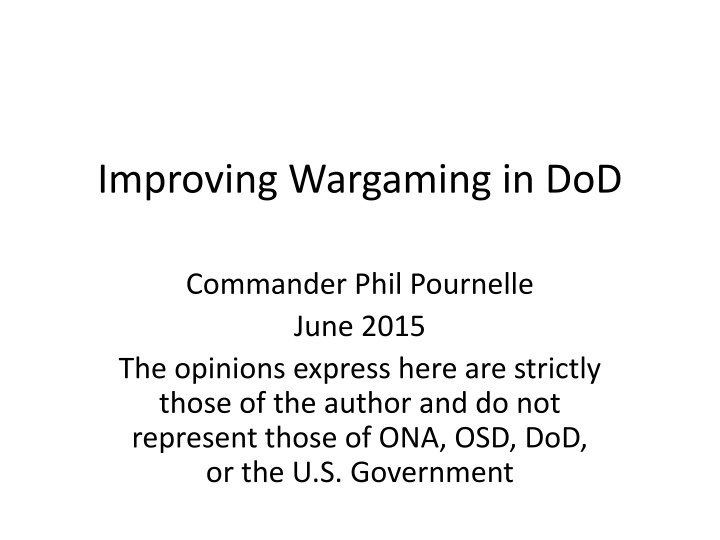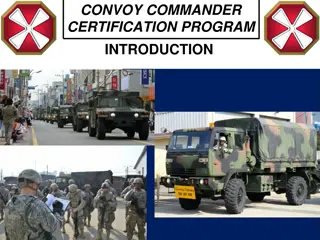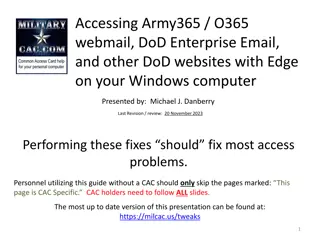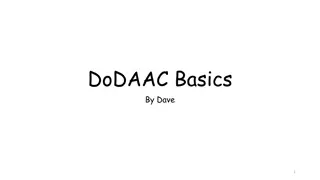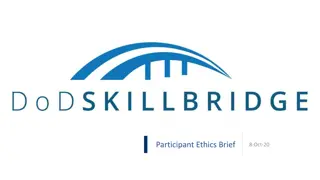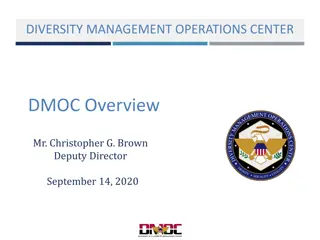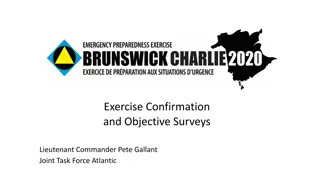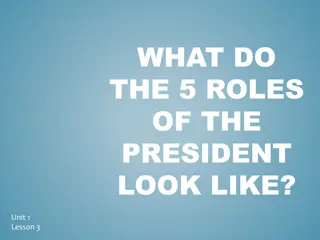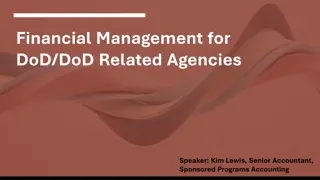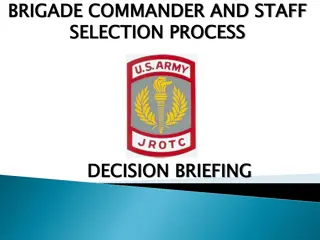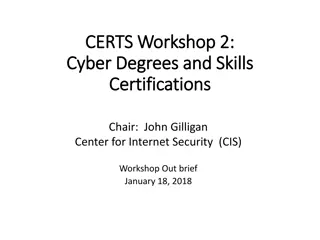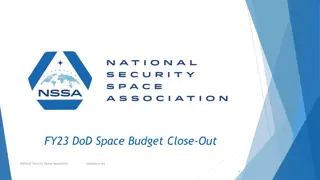Enhancing Wargaming in DoD Commander Phil Pournelle
This content delves into the purpose, benefits, and general categories of wargaming in the Department of Defense, emphasizing the characteristics of good exploratory wargaming and the Caffrey Triangle's strategic approach in military simulations.
Download Presentation

Please find below an Image/Link to download the presentation.
The content on the website is provided AS IS for your information and personal use only. It may not be sold, licensed, or shared on other websites without obtaining consent from the author.If you encounter any issues during the download, it is possible that the publisher has removed the file from their server.
You are allowed to download the files provided on this website for personal or commercial use, subject to the condition that they are used lawfully. All files are the property of their respective owners.
The content on the website is provided AS IS for your information and personal use only. It may not be sold, licensed, or shared on other websites without obtaining consent from the author.
E N D
Presentation Transcript
Improving Wargaming in DoD Commander Phil Pournelle June 2015 The opinions express here are strictly those of the author and do not represent those of ONA, OSD, DoD, or the U.S. Government
Purpose and Benefits of Wargaming Fulfilling the need for abductive reasoning in institutions and leaders to compliment the analytic process Creation of an environment for creativity in the generation of theories and solutions Beginning of structuring the problem Preparing leaders for combat in the environment of the future Wargaming best value is achieved when it is part of a larger process
What should we do? Wargames: What could we do? Analysis: What is the best way to do it? Exercises: Can it really be done?
General Categories of Wargaming Creating Knowledge Discovery Games Conveying Knowledge Education Games Entertainment Unstructured Problem Role Playing Structured Problem Analytic Games Training Games Commercial Kriegsspiel (E.g. Risk) Exploratory Games
Characteristics of Good Exploratory Wargaming Adversarial environment focused on human decision making Iterative process leading to actionable instructions Best Practices
Characteristics of Good Exploratory Wargaming Adversarial Environment Focused on Human Decision Making Equal Adversaries Staffing, Time, Representation, Freedom of Action, etc. Decisions Why did they do it? What did they decide not to do? Requires Rapporteurs Consequences based on choices of adversaries Why did things happen? Should not hide results nor bury them in black box
The Caffrey Triangle Win at All Costs Emphasis: Victory Unconstrained by doctrine or culture Unconstrained by Blue s training objectives Act like them Emphasis: Realism Constrained by doctrine or culture Unconstrained by Blue s training objectives Train me Emphasis: A foil for Blue Unconstrained by doctrine or culture Constrained by Blue s training objectives Source J-8 SAGD
Characteristics of Good Wargaming Game designed to address the questions at the appropriate level Requires iteration to understand the problem Move from unstructured to structured Move from concept to defined actions Move from vague to rigorous Rigorous in definition of actions not necessarily rigorous in analysis, etc. Ultimate goal: Execution in real war
Characteristics of Seminar Wargames Role of Referee: Enable Discussion Adjudication: Usually very limited Potential for Player Creativity: Wide Open, Extremely Free Predictability: Not Very Rigor: Limited Phenomenology must be understood by the players Ability for Automation is impossible Quite often White cell and facilitators need to work very hard to keep the games within reasonable boundaries.
Characteristics of Matrix Wargames Role of Referee: Seek Consensus Adjudication: Consensus of Participants Potential for Player Creativity: Significantly Open, Mostly Free Predictability: Not Very Rigor: Limited to moderate Phenomenology must be understood by the players Ability for Automation is very limited, often impossible.
Characteristics of Free Kriegsspiel Role of Referee: Seek decisions and reasons Adjudication: Conducted by Referee Potential for Player Creativity: Limited to some degree by the umpire Predictability: Limited Rigor: Moderate Phenomenology must be understood by the Referee Ability for Automation is increasingly possible
Characteristics of Rigid Kriegsspiel Role of Referee: Resolve differences regarding rules Adjudication: Detailed rules set determines outcome Potential for Player Creativity: Extremely Limited (creativity usually breaks the game) Predictability: High Rigor: High Phenomenology must be understood by the Game Designer in advanced Ability for Automation is very possible
Uniformity is not required Rainbow Plan Games Gunnery Aviation Electronic Warfare
Characteristics of Good Wargaming Best Practices Small Events 8 to 12 players on a team, never more than 20 Competitive Red Team Wargames Simulation Do not fixate on accuracy and precision Save it for next step in cycle Iteration Learning Cycle of Research Grey Cell Stephen Downes-Martin, Adjudication: The Diabolus in Machina of War Gaming, Naval War College Online COA Analysis is not the same as wargaming
Improving Wargaming in DoD Wargaming must be a part of larger process Professional Military Education Must include wargame design in core curriculum Difference between guided discussions (important) and wargames COA Analysis is a guided discussion Reward and Employ expertise Continuous Effort Revamp Title X games Purpose? Team Building? Showcase Concepts Exploration? Classification Warplans Scenarios Rigor
